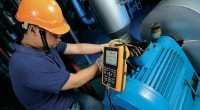The Role of Trolleys in Warehouses and 3PL Settings: Importance of Choosing the Right Trolley Castors
Trolleys are an indispensable tool in modern warehouses and third-party logistics (3PL) settings, streamlining the movement of goods and materials across facilities. These essential equipment pieces play a pivotal role in enhancing the efficiency of daily operations and the productivity of employees. In fast-paced environments, trolleys facilitate the seamless transportation of goods, whether they are large pallets, small packages, or individual components.
By providing a safe and effective way for employees to move materials around, trolleys help minimize physical strain and reduce the risk of workplace injuries. They also improve workflow by allowing for the quick transport of goods to their designated locations, cutting down on handling time and maximizing productivity.
Types of Trolleys and Their Components

There is a wide variety of trolleys available for use in warehouses and 3PL settings, each designed to meet specific needs. Some common types of trolleys include:
- Platform Trolleys: These trolleys feature a flat platform on which items can be stacked and transported. They are particularly useful for moving heavy or bulky loads.
- Shelf Trolleys: With multiple levels of shelving, these trolleys are ideal for organizing and transporting smaller items, making them perfect for inventory management and order picking.
- Cage Trolleys: Enclosed with walls or mesh sides, cage trolleys prevent items from falling out during transportation. They are especially useful for moving fragile or loose items.
- Tool Trolleys: Designed for carrying tools and equipment, these trolleys often include drawers and compartments for efficient storage and organization.
- Bulk Trolleys: Larger and heavier-duty, bulk trolleys are designed to handle oversized loads and are commonly used for transporting large items or high volumes of goods.
Each type of trolley is made up of various parts, including:
- Frame: The main structure of the trolley, providing support and stability.
- Handles: Used for pushing or pulling the trolley, often ergonomically designed for comfortable use.
- Shelves or Platforms: The surfaces where goods are placed during transportation.
- Castors: The wheels that allow the trolley to move smoothly across surfaces.
The Importance of Castors and the Superiority of Iron Castors

Among the components that make up a trolley, the castors play a crucial role in determining the trolley’s maneuverability and overall performance. Castors enable trolleys to move with ease, even when carrying heavy loads, and they come in various materials such as rubber, polyurethane, and iron caster.
Iron castors stand out as a superior choice for several reasons:
- Durability: Iron castors are known for their exceptional strength and durability. They can withstand heavy loads and frequent use without wearing down quickly, making them a cost-effective option in the long run.
- Load-Bearing Capacity: Due to their robust construction, an iron caster can handle higher weight capacities compared to other materials. This makes them ideal for heavy-duty trolleys used in demanding warehouse environments.
- Resistance to Wear and Tear: Iron castors are less prone to wear and tear, ensuring consistent performance over time. This longevity reduces the need for frequent replacements and maintenance.
- Smooth Movement: Iron castors provide smooth and stable movement across various surfaces, including concrete and rough flooring. This enhances the trolley’s maneuverability and reduces the effort required to push or pull it.
- Heat Resistance: Iron castors can withstand high temperatures, making them suitable for environments where heat exposure may be a concern.
- Minimal Maintenance: Iron castors require minimal maintenance compared to other materials. They are resistant to damage and corrosion, further extending their lifespan.
- Versatility: Iron castors can be used in various applications and are available in different sizes and designs to fit a wide range of trolleys and operational needs.
Choosing the Right Iron Castors for Your Trolleys
When selecting iron castors for your trolleys, it’s essential to consider several factors to ensure optimal performance and longevity:
- Load Capacity: Choose castors that can handle the weight of the loads you intend to carry. Consider both the weight of the trolley itself and the maximum load it will transport.
- Wheel Size and Design: Larger wheels offer better maneuverability and can navigate uneven surfaces more effectively. The design of the wheel, such as whether it’s swivel or fixed, also affects the trolley’s handling.
- Brake Options: Depending on your needs, you may want to choose castors with braking mechanisms to prevent the trolley from rolling away unintentionally.
- Mounting Type: Iron castors come with different mounting options, including top plates and stem mounts. Ensure the castors you choose are compatible with your trolley’s design.
- Floor Compatibility: Consider the type of flooring in your warehouse or facility. Iron castors are suitable for various surfaces, but you may need to choose a specific wheel design based on the floor type.
- Budget: While iron castors are generally cost-effective due to their longevity, it’s essential to balance quality with your budget when making a selection.
Conclusion
Iron castors are an excellent choice for trolleys used in warehouse and 3PL settings. Their durability, load-bearing capacity, and smooth movement make them an ideal option for handling heavy loads and navigating challenging environments. By selecting the right iron castors for your trolleys and ensuring proper maintenance, you can enhance the efficiency and productivity of your operations, ultimately benefiting your entire workflow.



